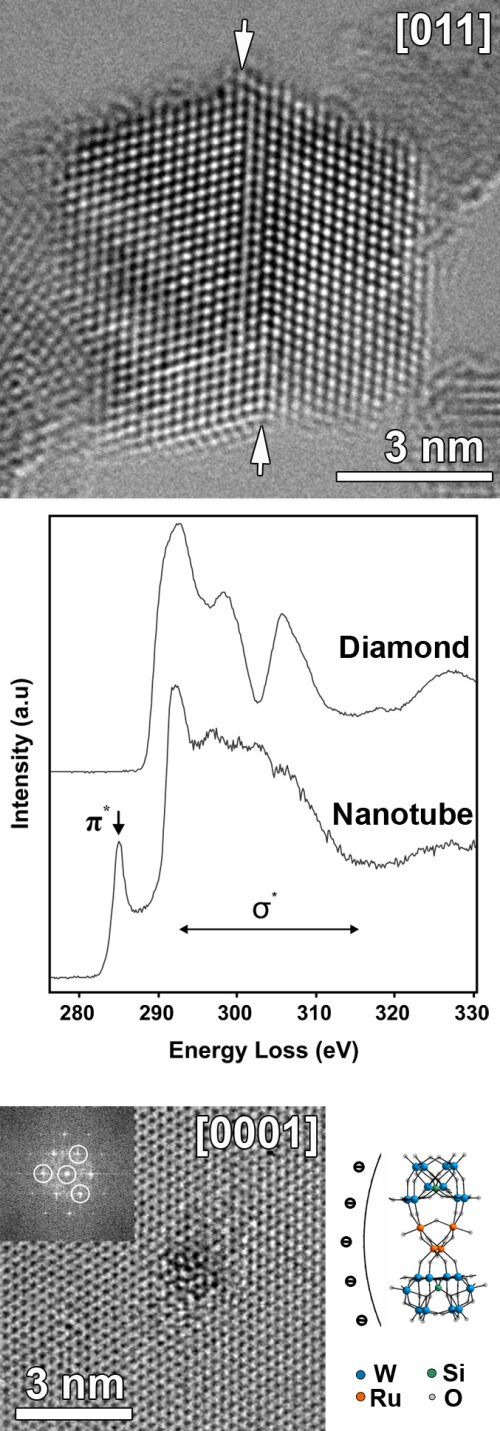Carbon based materials
Carbon-based materials have captured broad interest in the materials science community for decades. Carbon is an extremely light and versatile material that, depending on the local bonding of the constituting carbon atoms, has hugely varying properties. Well-known classic examples of carbon allotropes are diamond, amorphous carbon and graphite. More recently discovered allotropes are buckminsterfullerenes or buckyballs, carbon nanotubes and of course graphene.
At EMAT, we have a long-standing expertise on carbon based materials. A first major research topic is the study of defects and impurities in both natural and synthetic diamond as well as diamond based (nano)materials. Nanodiamond produced by detonation synthesis is a prime example of a carbon-based nanomaterial (see top Figure on the right, a detonation nanodiamond showing the presence of a {111}-type twin boundary indicated by white arrows), which can be used in a plethora of applications like polishing, luminescent probes for bioimaging and polymer- and metal-matrix composites with improved mechanical and thermal properties.
A much used analysis technique in carbon nanomaterial research is electron energy-loss spectroscopy (EELS). As EELS probes the local density of occupied states, it provides information on the local bonding of the investigated material. This means that the fine structure of e.g. the carbon K-edge can be used as a fingerprint for local carbon bonding (see middle panel to the right for the examples of sp3 hybridized carbon in diamond, and sp2 hybridized carbon in an arc-discharge multiwall nanotube).
An upcoming field of research is that of hybrid or functionalized carbon nanostructures. A recent example of this type of material is displayed in the bottom panel in the figure to the right. Here, poly- polyoxometalate Ru and W containing clusters are grafted onto a few-layer graphene support, acting as a catalyst for water oxidation reactions. The dynamics of these small clusters has been studied using aberration-corrected HRTEM at low acceleration voltage (80 kV).
